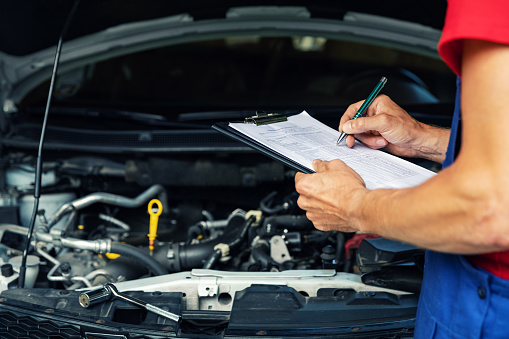Today’s vehicles are marvels of modern engineering, packed with high-tech components that make driving safer and more efficient. But some of the most critical parts are surprisingly low-tech, like your car’s thermostat. It might shock you to learn that this essential piece of equipment operates using something as simple as wax.
How Does a Thermostat Work? The Power of Wax in Action
Your car’s thermostat is a crucial player in the engine’s cooling system. Positioned between the engine and the radiator, the thermostat’s job is to regulate the flow of coolant, ensuring the engine warms up properly without overheating. When you start your car, the thermostat blocks coolant from flowing to the radiator, allowing the engine to reach its optimal operating temperature—usually around 200 degrees Fahrenheit. Once it hits that sweet spot, the thermostat opens up, allowing coolant to flow freely and maintain a balanced temperature.
Here’s the fascinating part: It’s all done with wax!
Yes, you read that right. The thermostat relies on the expansion of wax to function. Inside the thermostat, there’s a small cylinder filled with wax. As the engine heats up, the wax begins to melt at around 180 degrees Fahrenheit (though this temperature can vary slightly depending on the design). As the wax melts, it expands and pushes a rod connected to the valve, opening it and allowing coolant to circulate through the engine.
This simple yet effective mechanism is remarkably reliable. But, like all things mechanical, thermostats can go bad. And when they do, they can cause some serious headaches.
When Thermostats Fail: The Consequences of a Bad Thermostat
Given their reliability, thermostats are often overlooked—until they fail. And when they do, your vehicle’s engine is at risk of overheating. Here are some common reasons why a thermostat might go bad:
- Prior overheating damage: If your engine has overheated in the past, it could have damaged the thermostat, causing it to malfunction.
- Corrosion: Over time, the thermostat can corrode, especially if the coolant hasn’t been changed regularly.
- Wear and tear: Like any component, thermostats can simply wear out with age.
When a thermostat fails, it often gets stuck in one position—either open or closed—and both scenarios can lead to trouble.
Burning the Thermostat at Both Ends: What Happens When It Sticks Open or Closed
If your thermostat fails in the closed position, the coolant won’t flow to the radiator, causing the engine to overheat quickly. This can lead to severe engine damage if not addressed promptly. You might notice the temperature gauge rising rapidly, and if you continue driving, you could end up with a blown head gasket or worse.
On the flip side, if the thermostat gets stuck in the open position, coolant flows continuously through the engine. While this might sound harmless, it actually prevents the engine from reaching its optimal operating temperature. As a result, you could experience:
- Lower than normal temperature readings: Your temperature gauge may show that the engine isn’t warming up properly.
- Inefficient heating: The cabin heater might not get as warm as it used to, leaving you chilly on cold days.
- Poor drivability: In cooler weather, your car might struggle to perform, especially during the first few minutes of driving.
- Reduced fuel efficiency: An engine that doesn’t reach its optimal temperature can burn more fuel, leading to a decrease of 2 to 3 miles per gallon.
- Increased emissions: Your car could emit more pollutants, contributing to environmental harm.
In short, a stuck thermostat—whether open or closed—can cause a cascade of problems that affect your vehicle’s performance and longevity.
Upon Closer Inspection: Why Regular Maintenance Matters
At our shop, we take your vehicle’s health seriously. Part of our job is to catch issues like a failing thermostat before they turn into bigger, more expensive problems. During routine inspections, we check components like the thermostat to ensure everything is in good working order.
We understand that some customers are wary of what they perceive as “upselling” during inspections, sometimes referred to as a “laundry list” of recommended repairs. However, it’s important to remember that reputable shops prioritize your safety and the longevity of your vehicle. Businesses that push unnecessary services don’t stay in business long. Trustworthy shops, especially those with a long history—like ours, which has been serving customers since 1978—are focused on keeping you informed and safe on the road.
Final Thoughts: Trust the Experts for Your Vehicle’s Health
Your car’s thermostat might be a small part, but it plays a big role in keeping your engine running smoothly. When it goes bad, the consequences can range from annoying to catastrophic. That’s why it’s crucial to stay on top of regular maintenance and trust professionals to handle repairs.
At Certified Automotive Specialists, we’re dedicated to providing top-notch service and ensuring your vehicle is in the best possible condition. Whether it’s spotting a failing thermostat or addressing other maintenance needs, you can count on us to prioritize your safety and satisfaction. We’ll help you navigate necessary repairs, work with your budget, and make sure your car is ready to hit the road with confidence.
When it comes to your vehicle, don’t take chances with quick fixes or neglecting maintenance. Keep it in top shape by trusting experts who care as much about your car as you do.








